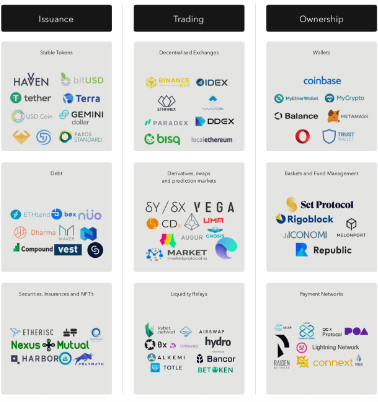In the DeFi ecosystem, yield farming is a technique used to earn greater returns on cryptocurrency holdings. It involves staking cryptocurrency in a liquidity pool or smart contract on a DeFi platform to receive rewards in the form of additional cryptocurrency or tokens. Yield farmers commonly transfer their cryptocurrency between various DeFi platforms to optimize their returns, making use of incentives like liquidity provider rewards, governance tokens, or staking rewards. This approach has gained popularity among DeFi users searching for methods to earn passive income on their cryptocurrency investments.
Introduction to yield farming
Yield farming is a novel concept in decentralized finance (DeFi), which rewards users for supplying liquidity to various DeFi protocols. This involves either lending or staking cryptocurrency assets within a decentralized network to earn interest, while also participating in governance through voting on proposals to adjust network rules or parameters.
The primary objective of yield farming is to generate a return on investment (ROI) by leveraging the high interest rates present in the DeFi ecosystem. Yield farmers can receive rewards in the form of additional tokens or fees generated by the protocol, which can then be reinvested to amplify their returns.
To participate in yield farming, users must supply liquidity to a decentralized exchange (DEX) or liquidity pool, where they can earn returns based on the liquidity provided. This liquidity is utilized to facilitate trades between different cryptocurrencies, and yield farmers earn a portion of the fees generated by the trading activity.
There are different methods for yield farming, such as liquidity mining, staking, and providing liquidity to a liquidity pool. Each technique carries its own risks and rewards, and yield farmers must carefully weigh the trade-offs before deciding which approach to pursue.
How yield farming works in the DeFi ecosystem
Yield farming is a well-known method in the DeFi ecosystem that allows users to gain higher returns on their cryptocurrency investments. These rewards may come in the form of additional cryptocurrency, governance tokens, or staking rewards.
Liquidity provider (LP) rewards are given to yield farmers who deposit cryptocurrency into the pool. Yield farmers can also earn governance tokens that grant them voting rights on platform decisions by staking their cryptocurrency on the platform and providing liquidity to the pool.
Yield farmers can maximize their returns by moving their cryptocurrency between various DeFi platforms to take advantage of the highest rewards. However, this approach can also increase the risks associated with DeFi platforms, such as smart contract vulnerabilities, market volatility, and liquidity risks. Therefore, yield farming should be performed with caution, and users should conduct their own research and risk analysis before participating.
Risks and challenges associated with yield farming
Yield farming may present opportunities for high returns, but it also entails significant risks and challenges. Among the key risks and challenges to be mindful of are:
- Impermanent loss: This risk pertains to fluctuations in the value of tokens in a liquidity pool, potentially causing a loss for yield farmers if the value of one token decreases compared to the other.
- Market risk: The high volatility of cryptocurrency prices can impact yield farming returns if the value of assets in a liquidity pool declines.
- Liquidity risk: The amount of liquidity provided to a pool is crucial to yield farming returns. Insufficient liquidity may lead to lower returns and lack of trading activity.
- Regulatory risk: As DeFi is a new and emerging industry, regulatory changes and uncertainties may impact the profitability of yield farming.
- Network risk: Yield farming depends on the performance and security of the underlying DeFi network. Any vulnerabilities or attacks could potentially result in loss of funds or lower returns for yield farmers.
In conclusion, yield farming is a risky practice that requires thorough consideration and risk management to maximize returns and minimize losses. It is essential to research and understand the mechanics of each DeFi protocol before participating in yield farming.
Future potential and development of yield farming in DeFi
Yield farming has gained immense popularity in the DeFi ecosystem, and it is expected to expand further in the future. The rise in demand for yield farming has prompted more DeFi platforms to offer liquidity pools and other incentives to lure liquidity providers.
The advancement of yield farming is also spurring innovation in the DeFi space, with new products and services being developed to cater to the needs of yield farmers. For instance, some DeFi platforms are exploring the use of automated market makers (AMMs) to facilitate trades in liquidity pools, while others are experimenting with novel forms of governance and incentive mechanisms.
As the DeFi ecosystem continues to evolve, it is probable that yield farming will become even more sophisticated and offer even higher returns to users. However, it is important to keep in mind that yield farming comes with risks, and users should always conduct their own research and risk analysis before participating in any DeFi platform or strategy.







